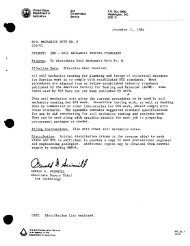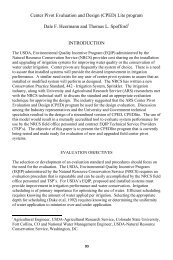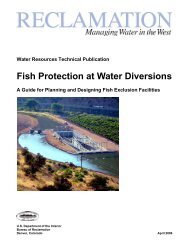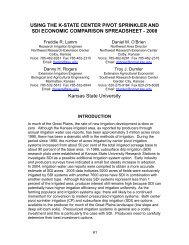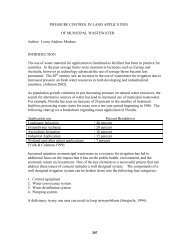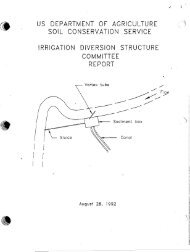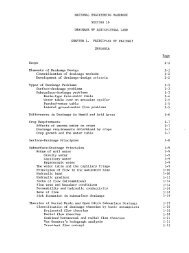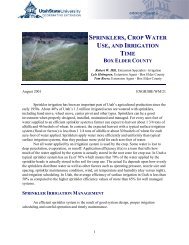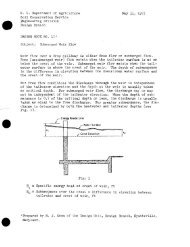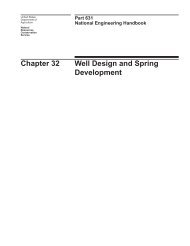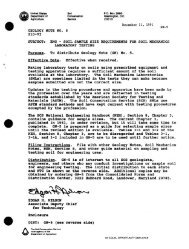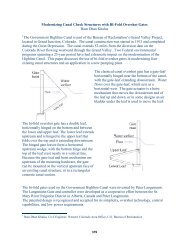Chapter 11: Sprinkle Irrigation - NRCS Irrigation ToolBox Home Page
Chapter 11: Sprinkle Irrigation - NRCS Irrigation ToolBox Home Page
Chapter 11: Sprinkle Irrigation - NRCS Irrigation ToolBox Home Page
You also want an ePaper? Increase the reach of your titles
YUMPU automatically turns print PDFs into web optimized ePapers that Google loves.
For center-pivot systems and fully automatic fixed<br />
systems, it is best to let d equal the gross depth required<br />
per day and f = 1.0. To allow for some<br />
breakdown or moving of systems, T can be reduced<br />
by 5 to 10 percent from the potential value of 24 hr.<br />
Of major importance are f and T because they<br />
have a direct bearing on the capital investment per<br />
acre required for equipment. From equation 1 it is<br />
obvious that the longer the operating time (ff) the<br />
smaller the required system capacity and, therefore,<br />
the cost for irrigating a given acreage. Conversely,<br />
where the farmer wishes to irrigate an acreage in a<br />
minimum number of days and has labor available<br />
only for operation during daylight hours, the equipment<br />
costs per acre will be high. With center-pivot<br />
and automated field systems, light, frequent irrigations<br />
are practical because labor requirements are<br />
minimal. With these systems irrigation frequency<br />
should be based on maintaining optimum soil-plantwater<br />
conditions rather than on allowing soil moisture<br />
depletion levels that are a compromise between<br />
labor requirements, capital costs, and growing<br />
conditions (as recommended in <strong>Chapter</strong> 1).<br />
Before a sprinkle system is planned, the designer<br />
should thoroughly acquaint the owner with these<br />
facts and the number of operating hours that can<br />
be allowed for completing one irrigation. Also the<br />
farmer should understand the amount of labor reh<br />
quired to run the sprinkle system so that this<br />
operation interferes minimally with other farming<br />
operations.<br />
Areas that have several soil zones that vary widely<br />
in water-holding capacity and infiltration rate<br />
can be subdivided on the basis of the water needed<br />
at each irrigation (fig. <strong>11</strong>-14) for all systems except<br />
center pivots. It is easier to operate center-pivot<br />
sprinklers as though the entire field has the soil<br />
with the lowest water-holding capacity and infiltrae<br />
tion rate.<br />
Sample calculation <strong>11</strong>-1 has been prepared as an<br />
example of the use of the formula where a single<br />
crop is irrigated in the design area. The design<br />
moisture use rate and irrigation frequency can be<br />
obtained from irrigation guides where available.<br />
Otherwise, they may be computed from Technical<br />
Release No. 21, <strong>Irrigation</strong> Water Requirements and<br />
<strong>Chapter</strong> 1, Soil-Plant- Water Relationships,<br />
Figure Il-14.-Subdivision<br />
zones.<br />
of design areas having different soil



